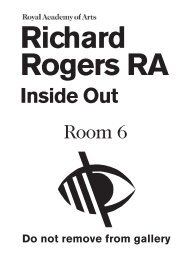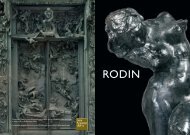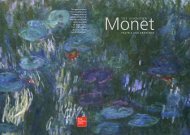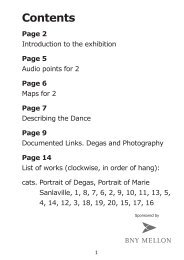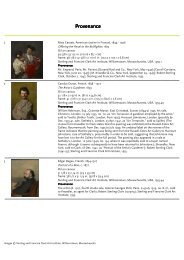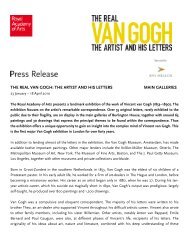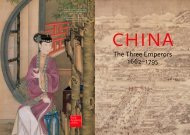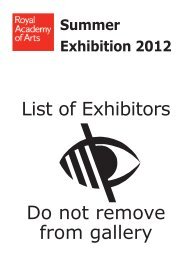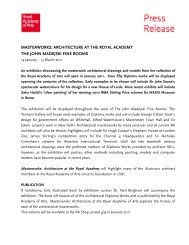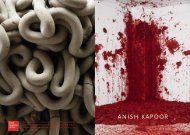KIRCHNER - Royal Academy of Arts
KIRCHNER - Royal Academy of Arts
KIRCHNER - Royal Academy of Arts
Create successful ePaper yourself
Turn your PDF publications into a flip-book with our unique Google optimized e-Paper software.
context, how do they contribute to the dialogue between art and life that<br />
so preoccupied Kirchner in his later years?<br />
What is Kirchner expressing in this painting and through what<br />
manipulations <strong>of</strong> his palette, composition and self-depiction does he<br />
express it? Think about the irony that Kirchner has presented himself<br />
as powerless to paint and yet has produced one <strong>of</strong> his most powerful<br />
and meaningful works. What do you think is the role <strong>of</strong> the artist in<br />
times <strong>of</strong> war?<br />
CONCLUSION<br />
As Kirchner’s crisis worsened, close friends helped him to emigrate to<br />
a log cabin near Davos in Switzerland where he remained for the rest <strong>of</strong><br />
his life, receiving medical treatment at regular intervals. The move was<br />
accompanied by a radical change in subject matter for Kirchner. Although<br />
he continued to paint with the same vibrant nervousness, his new environs<br />
inspired him to depict alpine scenes <strong>of</strong> mountain farmers, rather than the<br />
urban milieus <strong>of</strong> Dresden and Berlin.<br />
It was almost ten years before Kirchner returned to Germany, anxious<br />
to secure recognition <strong>of</strong> his importance for the artistic traditions <strong>of</strong> his<br />
native country. By this time, all the major museums <strong>of</strong> modern art had<br />
acquired works by him and he was regularly included in exhibitions.<br />
This <strong>of</strong>ficial recognition ended, however, when the National Socialists came<br />
to power in 1933. A total <strong>of</strong> 639 works by Kirchner were identified as<br />
‘degenerate’ by the Nazis and were subsequently confiscated from<br />
museums, before being sold abroad or destroyed. Others were displayed in<br />
the Degenerate Art exhibition <strong>of</strong> 1937, prompting the first thoughts <strong>of</strong> suicide<br />
in Kirchner: ‘The future before us looks very dark…If need be, I shall<br />
sacrifice my life for art.’ The combination <strong>of</strong> his mental fragility and the<br />
painful realisation that he had been <strong>of</strong>ficially ostracised in his homeland<br />
drove Kirchner to shoot himself a year later outside his cabin near Davos.<br />
In terms <strong>of</strong> vital, expressive realism, Kirchner was the great mediator<br />
between Vincent van Gogh and the art <strong>of</strong> the second half <strong>of</strong> the twentieth<br />
century. Furthermore, as the versatile and brilliant founder <strong>of</strong> Die Brücke,<br />
his work formed a bridge between the graphic and <strong>of</strong>ten folkloric art <strong>of</strong><br />
traditional German artists, such as Albrecht Dürer, and the experimental<br />
artistic output <strong>of</strong> the international avant-garde. This exhibition, one <strong>of</strong> the<br />
first major retrospectives <strong>of</strong> Kirchner’s oeuvre in this country, provides an<br />
exciting opportunity to view the distinctive early work <strong>of</strong> one <strong>of</strong> the<br />
foremost artists <strong>of</strong> the twentieth century.<br />
20<br />
‘His optical experience is always<br />
also a psychological experience.<br />
He looks at the world with eyes<br />
that understand the hidden<br />
inner life, and it is only what he<br />
has understood there that he<br />
wants to capture in the picture.<br />
His concern is never the purely<br />
objective, but always the<br />
psychological.’<br />
Archaeologist and art historian<br />
Botho Gräf




